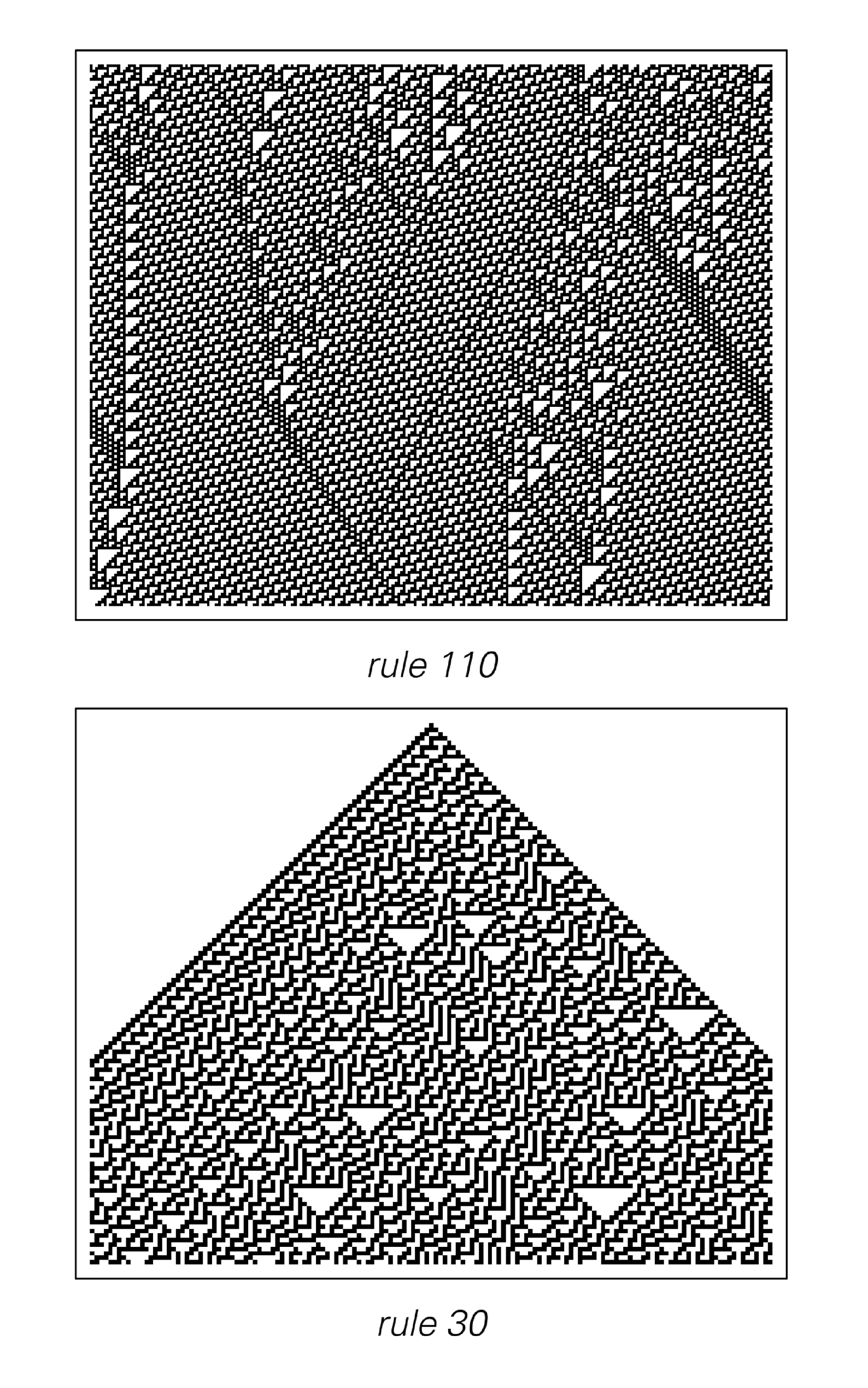And even in present-day situations, if we are exposed to objects or activities outside the areas of human endeavor with which we happen to be familiar, it can be very hard for us to tell which features are immediately purposeful, and which are unintentional—or have, say, primarily ornamental or ceremonial functions.
Indeed, even if we are told a purpose we will often not recognize it. And the only way we will normally become convinced of its validity is by understanding how some whole chain of consequences can lead to purposes that happen to fit into our own specific personal context.
So given this how then can we ever expect in general to recognize the presence of purpose—say as a sign of extraterrestrial intelligence?
And as an example if we were to see a cellular automaton how would we be able to tell whether it was created for a purpose?
Of the cellular automata in this book—especially in Chapter 11—a few were specifically constructed to achieve particular purposes. But the vast majority originally just arose as part of my investigation of what happens with the simplest possible underlying rules.
And at first I did not think of most of them as achieving any particular purposes at all. But gradually as I built up the whole context of the science in this book I realized that many of them could in fact be thought of as achieving very definite purposes.
Systems like rule 110 shown below have a kind of local coherence in their behavior that reminds one of the operation of traditional engineering systems—or of purposeful human activity. But the same is not true of systems like rule 30. For although one can see that such systems have a lot going on, one tends to assume that somehow none of it is coherent enough to achieve any definite purpose.
Yet in the context of the ideas in this book, a system like rule 30 can be viewed as achieving the purpose of performing a fairly sophisticated computation. And indeed we know that this computation is useful in practice for generating sequences that appear random.
But of course it is not necessary for us to talk about purpose when we describe the behavior of rule 30. We can perfectly well instead talk only about mechanism, and about the way in which the underlying rules for the cellular automaton lead to the behavior we see.

Cellular automata whose behavior does and does not give the impression of being purposeful.